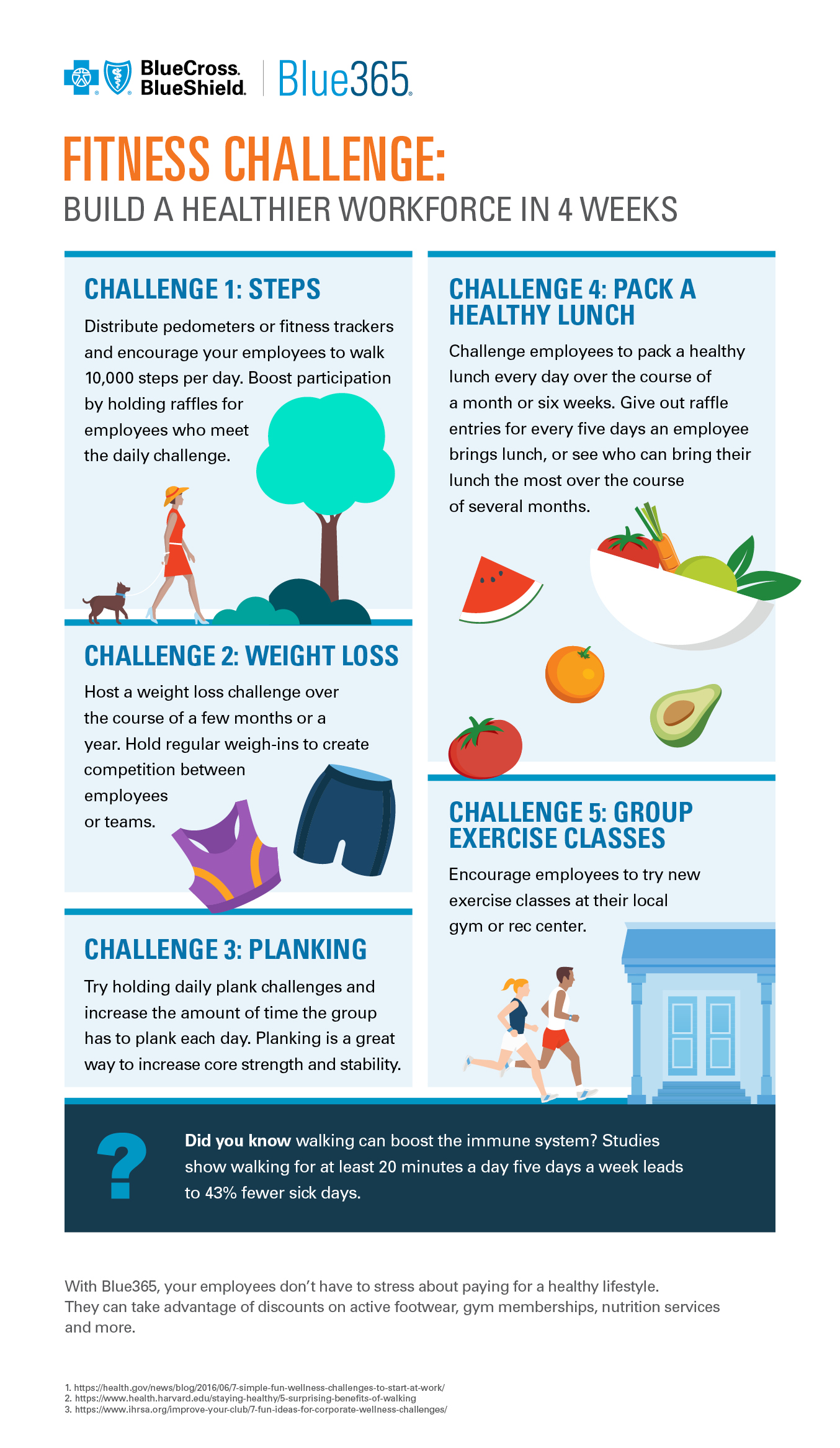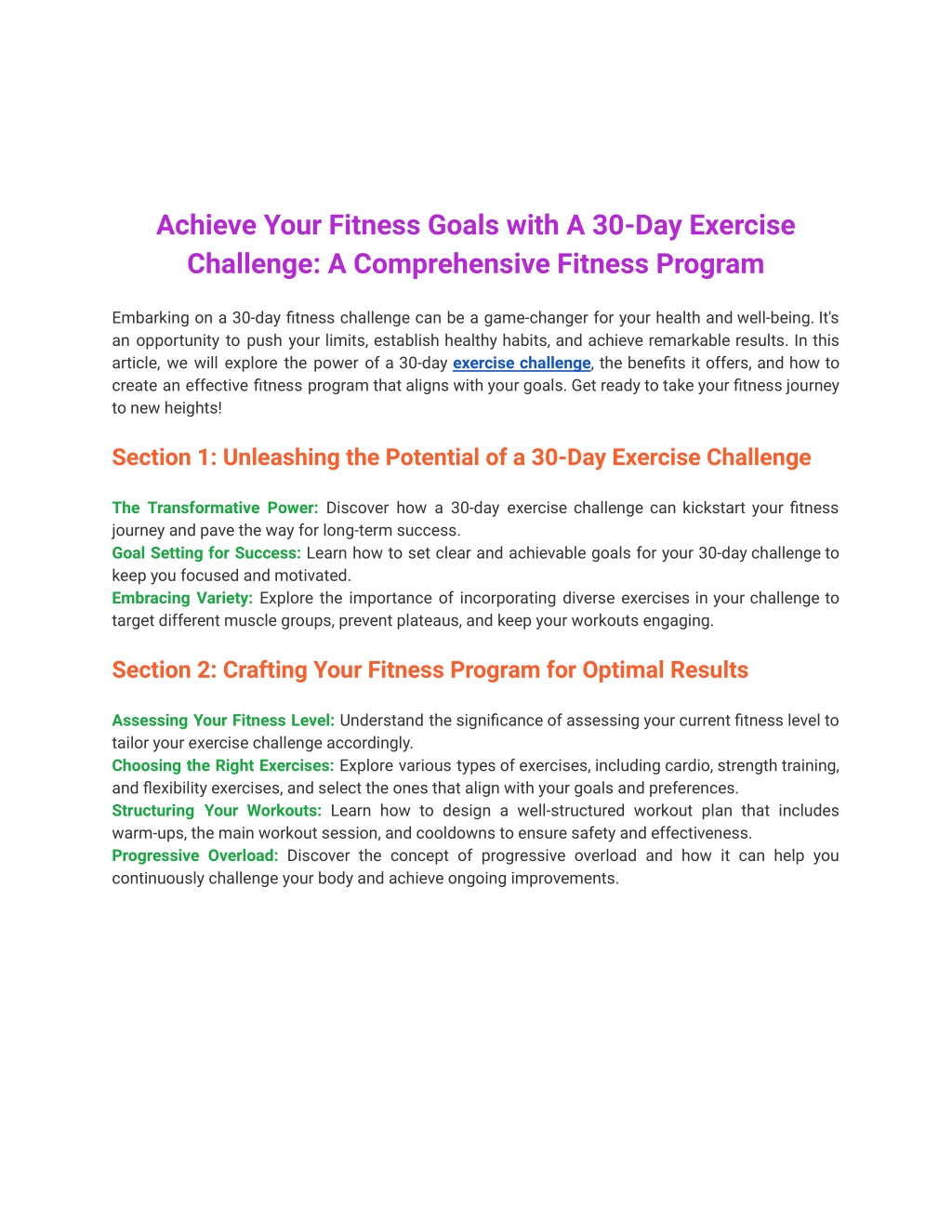Fitness Challenges To Conquer In 2025: A Comprehensive Guide
Fitness Challenges to Conquer in 2025: A Comprehensive Guide
Related Articles
- Fitness Trackers With GPS: Your Ultimate Guide To Enhanced Fitness Tracking
- Fitness For Mental Health: Unlocking The Power Of Movement
- Mastering The Breath: Unlocking Your Workout Potential Through Proper Breathing
- Jumpstart Your Day: Mastering The Morning Workout Routine For Peak Energy
- Unveiling The Secrets: Advanced Tips And Tricks For Women’s Toning Routines
Introduction
Uncover insights to start or boost your journey with Fitness Challenges to Conquer in 2025: A Comprehensive Guide.
Fitness Challenges to Conquer in 2025: A Comprehensive Guide

2025 beckons with the promise of new beginnings and personal growth. For many, this translates to setting ambitious fitness goals and tackling exciting challenges. This article dives deep into a variety of fitness challenges you can incorporate into your 2025 journey, catering to different fitness levels and interests. We’ll explore the nuances of each challenge, provide practical tips and tricks for success, and address common concerns to help you choose the perfect fit and achieve your desired outcomes.
1. The 30-Day Strength Training Challenge: Building a Solid Foundation
This foundational challenge focuses on building strength and muscle mass through consistent weight training. It’s perfect for beginners and those looking to improve their overall physique. The challenge involves a structured workout program, typically three to four days a week, targeting all major muscle groups. Each workout session should include compound exercises like squats, deadlifts, bench presses, overhead presses, and rows, along with isolation exercises to target specific muscle groups.
Progression: Begin with lighter weights and focus on proper form. Gradually increase the weight as you get stronger. Pay attention to your body and rest when needed. Avoid pushing yourself too hard, especially in the beginning. A good progression involves increasing the weight by 2.5-5 pounds every week or two, or increasing the repetitions by 2-3 reps per set when you can comfortably perform the current weight.
Tips and Tricks:
- Proper Form is Key: Prioritize correct form over lifting heavy weights. Watch videos, consult a trainer, or use a mirror to ensure you’re performing each exercise correctly. Incorrect form can lead to injuries.
- Progressive Overload: Continuously challenge your muscles by increasing the weight, reps, or sets over time. This is crucial for muscle growth and strength gains.
- Rest and Recovery: Allow your muscles adequate time to recover between workouts. Aim for at least one day of rest per week.
- Nutrition is Crucial: Support your training with a balanced diet rich in protein to aid muscle repair and growth.
- Listen to Your Body: Don’t ignore pain. Rest or modify exercises if you experience any discomfort.

2. The 100-Day Running Challenge: Finding Your Pace and Endurance
This challenge is ideal for those aiming to improve their cardiovascular fitness and endurance. It involves gradually increasing your running distance or time over 100 days. Beginners can start with shorter runs and gradually increase the duration and distance. More experienced runners can focus on speed or challenging terrain.
Progression: A popular approach is the Couch to 5k program, which gradually builds up your running capacity over several weeks. Alternatively, you can create a personalized plan based on your current fitness level, increasing your running distance or time by a small percentage each week. Include rest days to allow your body to recover.
Tips and Tricks:
- Start Slow: Don’t try to do too much too soon. Gradually increase your running distance and intensity.
- Proper Running Form: Maintain good posture, land midfoot, and avoid overstriding.
- Listen to Your Body: Pay attention to pain and rest when needed. Don’t push through injuries.
- Invest in Good Running Shoes: Proper footwear is crucial for preventing injuries.
- Stay Hydrated: Drink plenty of water before, during, and after your runs.
- Vary Your Runs: Incorporate interval training, hill workouts, and easy runs to challenge your body in different ways.
3. The 60-Day Yoga Challenge: Flexibility, Strength, and Mindfulness
This challenge focuses on improving flexibility, strength, and mindfulness through regular yoga practice. It’s suitable for all fitness levels, from beginners to experienced yogis. Choose a style of yoga that suits your preferences and fitness level, such as Hatha, Vinyasa, or Restorative yoga.
Progression: Start with beginner-level classes or videos and gradually progress to more challenging poses and sequences. Focus on proper alignment and breathing techniques. Listen to your body and avoid pushing yourself too hard, especially in the beginning.
Tips and Tricks:
- Find a Qualified Instructor: Consider taking classes from a certified yoga instructor, especially if you’re a beginner.
- Consistency is Key: Aim for daily practice, even if it’s just for 15-20 minutes.
- Listen to Your Body: Don’t force yourself into poses that cause pain.
- Focus on Your Breath: Proper breathing is essential for maximizing the benefits of yoga.
- Be Patient: Flexibility and strength take time to develop. Don’t get discouraged if you don’t see results immediately.
4. The 90-Day Calisthenics Challenge: Bodyweight Mastery
This challenge utilizes bodyweight exercises to build strength, endurance, and muscle mass. It’s a great option for those who prefer to workout without equipment. The challenge involves a structured program that gradually increases the difficulty of exercises over 90 days.
Progression: Start with basic exercises like push-ups, squats, lunges, and planks. Gradually increase the number of repetitions, sets, or the difficulty of the exercises. You can progress by adding variations like incline push-ups, decline push-ups, pistol squats, or handstand push-ups.
Tips and Tricks:
- Proper Form: Maintain correct form to prevent injuries and maximize results.
- Progressive Overload: Continuously challenge your muscles by increasing the difficulty of the exercises.
- Rest and Recovery: Allow your muscles adequate time to recover between workouts.
- Nutrition: Support your training with a balanced diet rich in protein.
- Listen to Your Body: Don’t push yourself too hard, especially in the beginning.
5. The Year-Long Hiking Challenge: Exploring Nature and Building Fitness
This challenge combines fitness with adventure, encouraging you to explore nature while improving your cardiovascular fitness and endurance. It involves setting a goal to hike a certain number of trails or accumulate a specific amount of elevation gain throughout the year.
Progression: Start with shorter, easier hikes and gradually increase the distance, elevation gain, and difficulty of the trails. Pay attention to your fitness level and choose trails that are appropriate for your abilities.
Tips and Tricks:
- Proper Gear: Invest in comfortable hiking boots, appropriate clothing, and a backpack to carry essentials.
- Trail Safety: Let someone know your hiking plans, bring a map and compass, and be aware of potential hazards.
- Hydration and Nutrition: Bring plenty of water and snacks to keep your energy levels up.
- Pace Yourself: Don’t push yourself too hard, especially on longer hikes.
- Enjoy the Scenery: Take your time to appreciate the beauty of nature.
6. The 12-Week Cycling Challenge: Pedal Your Way to Fitness
This challenge is perfect for those who enjoy cycling. It involves a structured training plan that gradually increases the duration and intensity of your cycling sessions over 12 weeks. This could involve increasing distance, incorporating interval training, or tackling hilly terrain.
Progression: Start with shorter, easier rides and gradually increase the distance and intensity. Include rest days to allow your body to recover. Consider using a cycling computer or app to track your progress.
Tips and Tricks:
- Proper Bike Fit: Ensure your bike is properly fitted to your body to prevent discomfort and injuries.
- Gear Selection: Choose appropriate gears for different terrains and intensities.
- Safety First: Wear a helmet and follow traffic laws.
- Hydration and Nutrition: Bring water and snacks on longer rides.
- Listen to Your Body: Don’t push yourself too hard, especially in the beginning.
7. The Personalized Fitness Challenge: Tailoring Your Journey
This is the most flexible and adaptable challenge. It involves setting personalized fitness goals based on your individual interests, preferences, and fitness level. This could involve a combination of different activities, such as running, swimming, weight training, yoga, or any other activity you enjoy.
Progression: Set realistic and achievable goals, and break them down into smaller, manageable steps. Track your progress and adjust your plan as needed.
Tips and Tricks:
- Set SMART Goals: Your goals should be Specific, Measurable, Achievable, Relevant, and Time-bound.
- Find Activities You Enjoy: Choose activities that you find fun and motivating.
- Track Your Progress: Use a fitness tracker, journal, or app to monitor your progress.
- Stay Consistent: Regular exercise is key to achieving your fitness goals.
- Be Patient and Persistent: Don’t get discouraged if you don’t see results immediately. Consistency is key.
Conclusion
Choosing the right fitness challenge is a personal journey. Consider your current fitness level, interests, and goals when selecting a challenge. Remember that consistency and proper form are paramount. Don’t hesitate to seek professional guidance from a certified trainer or healthcare provider, especially if you have any underlying health conditions. Embrace the journey, celebrate your progress, and enjoy the process of transforming your health and well-being in 2025!
Frequently Asked Questions (FAQs)
Q: What if I miss a workout?
A: Don’t beat yourself up about it! Just get back on track with your next scheduled workout. Consistency is more important than perfection.
Q: How can I stay motivated?
A: Find a workout buddy, join a fitness class, set realistic goals, reward yourself for milestones, and track your progress to stay motivated.
Q: What should I eat to support my fitness challenge?
A: Focus on a balanced diet rich in fruits, vegetables, lean protein, and whole grains. Consult a registered dietitian for personalized dietary advice.
Q: What if I experience pain during a workout?
A: Stop the exercise immediately and rest. If the pain persists, consult a healthcare professional.
Q: Can I modify the challenges to fit my fitness level?
A: Absolutely! The challenges outlined above are guidelines. Feel free to modify them to suit your individual needs and abilities.
Source URL: [Insert a relevant URL here, e.g., a link to an article on fitness challenges from a reputable health and fitness website like the Mayo Clinic, NHS, or a similar source.] (Please replace this bracketed information with a real URL)
Closure
Thank you for joining us; keep visiting for updates on Fitness Challenges to Conquer in 2025: A Comprehensive Guide and related topics.
Stay tuned for more expert tips to elevate your fitness journey!
Keep up with our latest fitness and wellness content!



